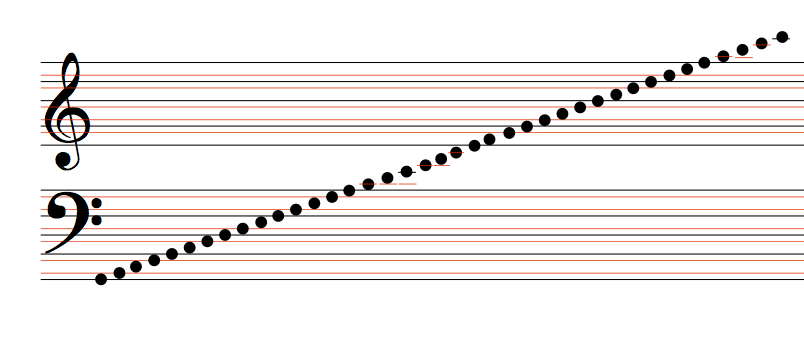|
Decibel from Perth performed in a cut down configuration featuring Cat Hope on bass flute and Lindsay Vickery on bass clarinet and Sydney-based guests Mark Cauvin on double bass and Jon Watts on laptop. Using their custom designed app, ScorePlayer, the ensemble performed two new graphic scores projected for both players and audience to follow. The first, Silent Revolution by Lindsay Vickery, combines a notation of coloured lines with collaged black and white images of historical revolts that gradually become increasingly abstracted. The players are prompted to make short staccato eruptions developing into longer more intertwined atonal sequences. The rich rabble of sound manipulated by Watts on laptop near the conclusion of the score is particularly interesting as is its visual correlation of dense larva-like texture.
Gail Priest: ISEA2013 7-16 June 2013 Musical multiverses Polysonics Realtime Magazine Soon after, LINDSAY VICKERY’s “Silent Revolution,” brings us very much back to Earth: to the turbulent, dark and overwhelming world of oppression and resistence. With its thematic, it could hardly be more timely – mere days after Egypt ousted its first democratically elected leader, Mohammed Morsi, and with plenty of other nations undergoing their own leadership upheavals and turmoil. Through a combination of richly illustrated scrolling score (projected onto a side wall) and highly evocative musical utterances, Vickery’s piece invokes or alludes to such uprisings, whilst also referencing the daunting realities of slums, trillion-dollar aircraft graveyards, toxic waste dumps and African refugee wars. While the limitations of both time and medium preclude the work from exploring these realities in any great factual depth, “Silent Revolution” opts to do what music does best: instill the emotional truth of the situation. “Silent Revolution” is dense with melodic anarchy and frantic, unstable rhythm, constellations of noise and pitch grasping at order but rarely – if ever reaching – it. Despite this, there are moments of beauty, lucidity, and a surface of calm. The title’s meaning, referencing a term given to drastic changes that occur with little fanfare, is ambiguous here. By my reckoning, it seems to point to the tremendous calamities and disturbing truths that go on under our noses – but also music’s problematic position within politics, as a cultural tool that is at once potent, powerful, and yet strangely mute. Lyndon Blue Cool Perth Nights 10 July 2013 The political overtones in Lindsay Vickery’s Silent Revolution and Rachael Dease’s The Perils of Obedience came from images projected onto the wall. Footage of waste dumps and psychology experiments literally shaped the scores and musical responses, creating macabre, decaying sound worlds. Rosalind Appleby The West Australian 8 July 2013 |
lindsay vickerytest version CategoriesArchives
September 2020
|



 RSS Feed
RSS Feed
